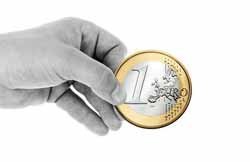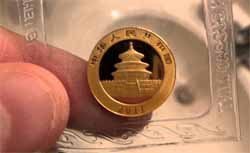 One of the most common mistakes amateur coin collectors do is not take care of the coins and they end up ruining it. Even expert coin collectors are unaware of the steps to be taken and it is highly recommended that they take proper care the coins and handle, store, clean and protect coins in an appropriate manner.
One of the most common mistakes amateur coin collectors do is not take care of the coins and they end up ruining it. Even expert coin collectors are unaware of the steps to be taken and it is highly recommended that they take proper care the coins and handle, store, clean and protect coins in an appropriate manner.
1. Feeling the Coins
Touching or feeling your coins with bare fingers ends up causing damage to the higher grade coins you collect. The human finger consists of oils and other small particles that stick to the surface of the coins and result in discoloration and microscopic scratching of the coins. Hence, it is highly recommended that cotton or latex gloves be used while dealing with the coins and they should be touched only at the edges.
2. Cleaning the Coins
Apart from the newly found or detected coins, cleaning and polishing of other previously existing coins would only result in damage rather than preserving them. When the metal comes in contact with air, oxidation and toning takes place and if you remove the oxidized layer or tone, the mint luster would be lost and the coins would look harsh and result in microscopic abrasions on the surface. Note that coins that are toned are pricier and hence, if you wish to clean, follow the appropriate cleaning tips.
3. Spitting on the Coins
When you talk regarding your coins, the damage is equivalent to that of touching or cleaning them if you clean them when you are talking, as droplets of saliva would fall on them from your mouth when you are talking and it leads to the formation of spots and discoloration that would be highly difficult to get rid of. A large number of uncirculated and mint-condition coins have been damaged due to this and hence, you should be careful enough.
 4. Breaking their holders
4. Breaking their holders
The value of the coins drastically go down if they are taken out from the mint set or by removing them off the holders provided. These holders and the box comprise of the literature regarding the coin and should not be tampered with. Similarly, sealed coins are considered to be premium and should not be taken off their permanent holders.
5. Exposure to Acid
When you preserve your coins in envelopes, paper-wraps with prints, cardboard boxes etc. ensure that the paper used would be acid-free as it would damage the coin to a great extent. Over a period of time, the paper material starts wearing off and the acid present in it starts getting deposited on the surface of the coins. This results in spotting, discoloration and would also lead to oxidation or toning of the coins. Due to this, the bright luster present in mint-condition coins would go off. Hence, make sure that the paper used for storing coins consists of acid-free materials.
6. Coating the coins with Green Slime
One more reason for spotting and degradation of coin surfaces is the storage of coins in plastic flips, boxes and holders that are made of PVC materials. Just like the acid materials present in papers, the chemical composition of plastic in PVC would also lead to the damage of coins eventually. When the coins are stored in the food-grade plastic storage materials or soft pliable coin flips, the coins would have a slimy green coating present at the surface which would result in a damage that cannot be reversed.
 7. Exposure to natural elements
7. Exposure to natural elements
When you store the coins in an attic or basement, it is subject to the harshness of temperature and humidity and this would results in the oxidation of coins. This would promote the damage of coins to a greater extent in comparison to other storage materials such as flips, paper, cardboard or plastic containers in which the coins are kept. It is highly recommended that the coins are stored in dark, dry temperature controlled rooms or safe-boxes such as custom-made coin cabinets so that the coins stay intact for long periods of time.